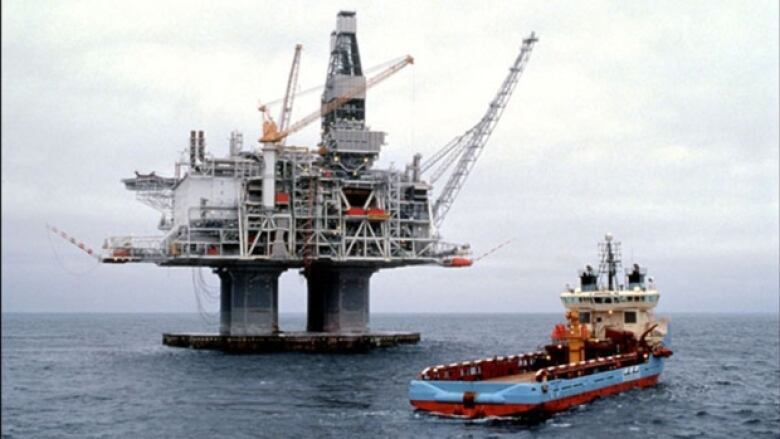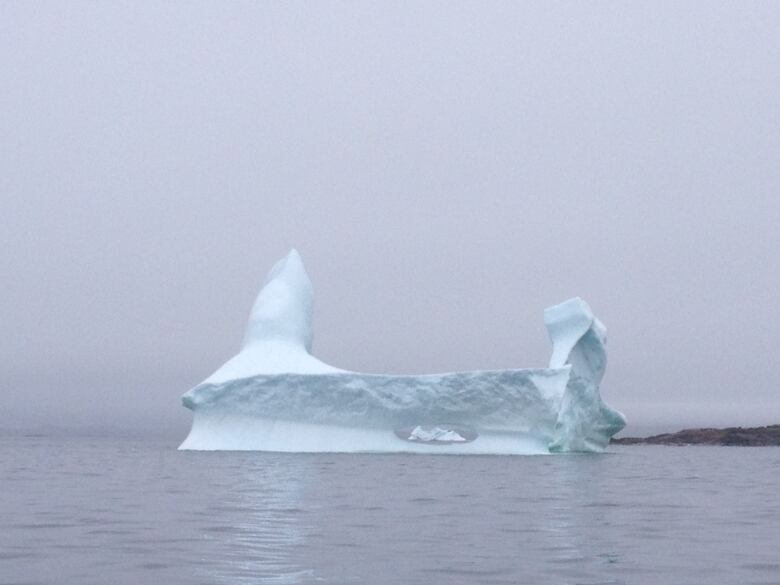Icebergs moving farther east this year, says Ice Patrol commander

The U.S. Coast Guard's International Ice Patrol says 2015 is shaping up to be a year of fewericebergs in shipping lanesthan 2014, even thoughthere'vebeen three recent incidents of ships being towed to avoid sea ice.
Over the weekend, the GSF Grand Banks rig had to be towed out of theway to avoid an iceberg.
Colleen McConnell, a spokesperson with Husky Energy, said the Grand Banks and SeaRose FPSOare both currently affected by icebergs.
The SeaRose shut down production Monday night as a "precautionary measure," McConnell said, and remains at the White Rose field.
"Sea ice and icebergs are something we see most years on the Grand Banks, so we have detailed ice management plans in place to guide our response activities," McConnell said.
Ocean currents move icebergs
"This year we're seeing icebergs move much further out to the east," CommanderGabrilleMcGrath told the St. John's Morning Show."Last year we saw a lot of icebergs to the south of St. John's."
The 10,000-year-old ice mountains, while a major tourist attraction,pose a threat to offshore oil rigs and vessels.
TheInternational IcePatrol is the group responsible for monitoring iceberg danger in theAtlantic and Arctic.It was established afterthe Titanicstruckaniceberg and sank 103 years ago.

McGrath said there were 1,546 icebergs intransatlantic shipping lanes last year, making it thesixth most severe season since records started in 1900.
So far this year, there have been 269 reported drifting into the lanes. McGrath said the volatility in the direction of the Labrador current has a lot to do with the discrepancies from year to year.
"It has a lot to do with movement in the Labrador current at any one time," she said.
"There's a lot of variations in how strong it is, and how strongly it's moving in different directions. This year, we're seeing that current flowing out to the east."
The detection of icebergs
While the International Iceberg Patrol isn't responsible for actually moving icebergs, they share their information with St. John's company Provincial Aerospace Limited, which coordinatesthe actual towing operations.

McGrath said Provincial Aerospace plays a crucial role in keeping sea lanes clear of ice during the iceberg season.
"They can move the rigs to avoid the icebergs and they can also move the iceberg out of the way of the rig," she said.
"They also do quite a lot of flights for the industry as they're patrolling that region."

When it comes to howthe large piecesof ice are actually moved, McGrath said the process is actually quite simple.
"They run a line around the outside of the iceberg and then they tow it out of the way with a strong enough vessel," she said.
"Depending on the size of the iceberg that can be challenging."












_(720p).jpg)


 OFFICIAL HD MUSIC VIDEO.jpg)
.jpg)



























































































